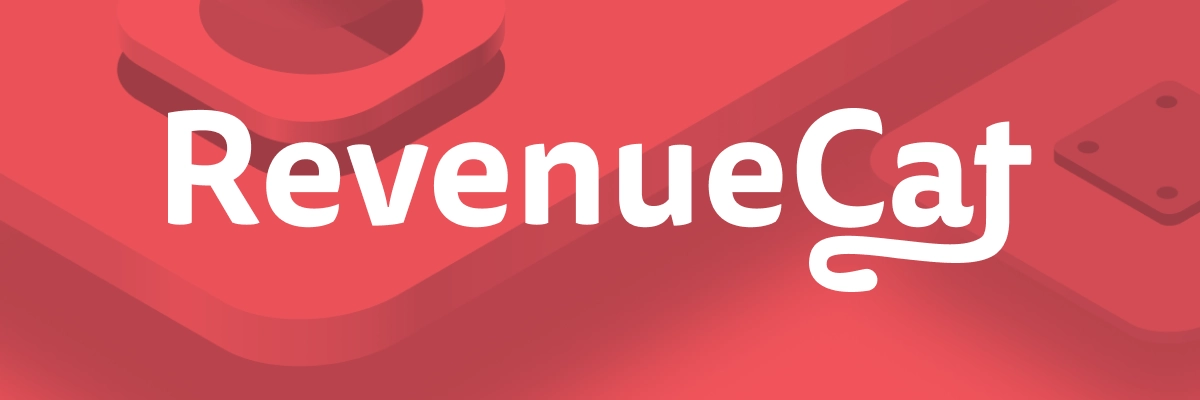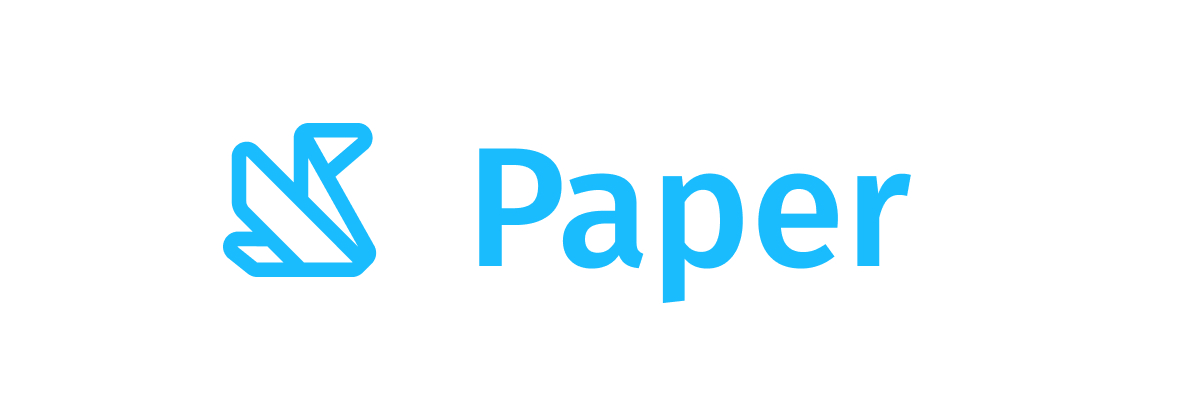HorizontalFloatingToolbar
Common
Component in Material 3 Compose
A horizontal floating toolbar displays navigation and key actions in a [Row]. It can be positioned anywhere on the screen and floats over the rest of the content.
Last updated:
Installation
dependencies {
implementation("androidx.compose.material3:material3:1.4.0-alpha15")
}
Overloads
@ExperimentalMaterial3ExpressiveApi
@Composable
fun HorizontalFloatingToolbar(
expanded: Boolean,
modifier: Modifier = Modifier,
colors: FloatingToolbarColors = FloatingToolbarDefaults.standardFloatingToolbarColors(),
contentPadding: PaddingValues = FloatingToolbarDefaults.ContentPadding,
scrollBehavior: FloatingToolbarScrollBehavior? = null,
shape: Shape = FloatingToolbarDefaults.ContainerShape,
leadingContent: @Composable (RowScope.() -> Unit)? = null,
trailingContent: @Composable (RowScope.() -> Unit)? = null,
expandedShadowElevation: Dp = FloatingToolbarDefaults.ContainerExpandedElevation,
collapsedShadowElevation: Dp = FloatingToolbarDefaults.ContainerCollapsedElevation,
content: @Composable RowScope.() -> Unit
)
Parameters
| name | description |
|---|---|
expanded | whether the FloatingToolbar is in expanded mode, i.e. showing [leadingContent] and [trailingContent]. Note that the toolbar will stay expanded in case a touch exploration service (e.g., TalkBack) is active. |
modifier | the [Modifier] to be applied to this FloatingToolbar. |
colors | the colors used for this floating toolbar. There are two predefined [FloatingToolbarColors] at [FloatingToolbarDefaults.standardFloatingToolbarColors] and [FloatingToolbarDefaults.vibrantFloatingToolbarColors] which you can use or modify. |
contentPadding | the padding applied to the content of this FloatingToolbar. |
scrollBehavior | a [FloatingToolbarScrollBehavior]. If null, this FloatingToolbar will not automatically react to scrolling. Note that the toolbar will not react to scrolling in case a touch exploration service (e.g., TalkBack) is active. |
shape | the shape used for this FloatingToolbar. |
leadingContent | the leading content of this FloatingToolbar. The default layout here is a [Row], so content inside will be placed horizontally. Only showing if [expanded] is true. |
trailingContent | the trailing content of this FloatingToolbar. The default layout here is a [Row], so content inside will be placed horizontally. Only showing if [expanded] is true. |
expandedShadowElevation | the elevation for the shadow below this floating toolbar when expanded. |
collapsedShadowElevation | the elevation for the shadow below this floating toolbar when collapsed. |
content | the main content of this FloatingToolbar. The default layout here is a [Row], so content inside will be placed horizontally. |
@ExperimentalMaterial3ExpressiveApi
@Composable
fun HorizontalFloatingToolbar(
expanded: Boolean,
floatingActionButton: @Composable () -> Unit,
modifier: Modifier = Modifier,
colors: FloatingToolbarColors = FloatingToolbarDefaults.standardFloatingToolbarColors(),
contentPadding: PaddingValues = FloatingToolbarDefaults.ContentPadding,
scrollBehavior: FloatingToolbarScrollBehavior? = null,
shape: Shape = FloatingToolbarDefaults.ContainerShape,
floatingActionButtonPosition: FloatingToolbarHorizontalFabPosition =
FloatingToolbarHorizontalFabPosition.End,
animationSpec: FiniteAnimationSpec<Float> = FloatingToolbarDefaults.animationSpec(),
expandedShadowElevation: Dp = FloatingToolbarDefaults.ContainerExpandedElevationWithFab,
collapsedShadowElevation: Dp = FloatingToolbarDefaults.ContainerCollapsedElevationWithFab,
content: @Composable RowScope.() -> Unit
)
Parameters
| name | description |
|---|---|
expanded | whether the floating toolbar is expanded or not. In its expanded state, the FAB and the toolbar content are organized horizontally. Otherwise, only the FAB is visible. Note that the toolbar will stay expanded in case a touch exploration service (e.g., TalkBack) is active. |
floatingActionButton | a floating action button to be displayed by the toolbar. It's recommended to use a [FloatingToolbarDefaults.VibrantFloatingActionButton] or [FloatingToolbarDefaults.StandardFloatingActionButton] that is styled to match the [colors]. Note that the provided FAB's size is controlled by the floating toolbar and animates according to its state. In case a custom FAB is provided, make sure it's set with a [Modifier.fillMaxSize] to be sized correctly. |
modifier | the [Modifier] to be applied to this floating toolbar. |
colors | the colors used for this floating toolbar. There are two predefined [FloatingToolbarColors] at [FloatingToolbarDefaults.standardFloatingToolbarColors] and [FloatingToolbarDefaults.vibrantFloatingToolbarColors] which you can use or modify. See also [floatingActionButton] for more information on the right FAB to use for proper styling. |
contentPadding | the padding applied to the content of this floating toolbar. |
scrollBehavior | a [FloatingToolbarScrollBehavior]. If provided, this FloatingToolbar will automatically react to scrolling. If your toolbar is positioned along a center edge of the screen (like top or bottom center), it's best to use this scroll behavior to make the entire toolbar scroll off-screen as the user scrolls. This would prevent the FAB from appearing off-center, which may occur in this case when using the [expanded] flag to simply expand or collapse the toolbar. Note that the toolbar will not react to scrolling in case a touch exploration service (e.g., TalkBack) is active. |
shape | the shape used for this floating toolbar content. |
floatingActionButtonPosition | the position of the floating toolbar's floating action button. By default, the FAB is placed at the end of the toolbar (i.e. aligned to the right in left-to-right layout, or to the left in right-to-left layout). |
animationSpec | the animation spec to use for this floating toolbar expand and collapse animation. |
expandedShadowElevation | the elevation for the shadow below this floating toolbar when expanded. |
collapsedShadowElevation | the elevation for the shadow below this floating toolbar when collapsed. |
content | the main content of this floating toolbar. The default layout here is a [Row], so content inside will be placed horizontally. |
Code Examples
ExpandableHorizontalFloatingToolbarSample
@OptIn(ExperimentalMaterial3ExpressiveApi::class)
@Preview
@Composable
fun ExpandableHorizontalFloatingToolbarSample() {
var expanded by rememberSaveable { mutableStateOf(true) }
Scaffold(
content = { innerPadding ->
Box(Modifier.padding(innerPadding)) {
LazyColumn(
// Apply a floatingToolbarVerticalNestedScroll Modifier toggle the expanded
// state of the HorizontalFloatingToolbar.
modifier =
Modifier.floatingToolbarVerticalNestedScroll(
expanded = expanded,
onExpand = { expanded = true },
onCollapse = { expanded = false },
),
state = rememberLazyListState(),
contentPadding = innerPadding,
verticalArrangement = Arrangement.spacedBy(8.dp)
) {
val list = (0..75).map { it.toString() }
items(count = list.size) {
Text(
text = list[it],
style = MaterialTheme.typography.bodyLarge,
modifier = Modifier.fillMaxWidth().padding(horizontal = 16.dp)
)
}
}
HorizontalFloatingToolbar(
modifier = Modifier.align(Alignment.BottomCenter).offset(y = -ScreenOffset),
expanded = expanded,
leadingContent = { LeadingContent() },
trailingContent = { TrailingContent() },
content = {
FilledIconButton(
modifier = Modifier.width(64.dp),
onClick = { /* doSomething() */ }
) {
Icon(Icons.Filled.Add, contentDescription = "Localized description")
}
}
)
}
}
)
}
OverflowingHorizontalFloatingToolbarSample
@OptIn(ExperimentalMaterial3ExpressiveApi::class)
@Preview
@Composable
fun OverflowingHorizontalFloatingToolbarSample() {
Scaffold(
content = { innerPadding ->
Box(Modifier.padding(innerPadding)) {
LazyColumn(
state = rememberLazyListState(),
contentPadding = innerPadding,
verticalArrangement = Arrangement.spacedBy(8.dp)
) {
val list = (0..75).map { it.toString() }
items(count = list.size) {
Text(
text = list[it],
style = MaterialTheme.typography.bodyLarge,
modifier = Modifier.fillMaxWidth().padding(horizontal = 16.dp)
)
}
}
HorizontalFloatingToolbar(
modifier = Modifier.align(Alignment.BottomCenter).offset(y = -ScreenOffset),
expanded = true,
leadingContent = { LeadingContent() },
trailingContent = {
AppBarRow(
overflowIndicator = { menuState ->
IconButton(
onClick = {
if (menuState.isExpanded) {
menuState.dismiss()
} else {
menuState.show()
}
}
) {
Icon(
imageVector = Icons.Filled.MoreVert,
contentDescription = "Localized description"
)
}
}
) {
clickableItem(
onClick = { /* doSomething() */ },
icon = {
Icon(
Icons.Filled.Download,
contentDescription = "Localized description"
)
},
label = "Download"
)
clickableItem(
onClick = { /* doSomething() */ },
icon = {
Icon(
Icons.Filled.Favorite,
contentDescription = "Localized description"
)
},
label = "Favorite"
)
clickableItem(
onClick = { /* doSomething() */ },
icon = {
Icon(
Icons.Filled.Add,
contentDescription = "Localized description"
)
},
label = "Add"
)
clickableItem(
onClick = { /* doSomething() */ },
icon = {
Icon(
Icons.Filled.Person,
contentDescription = "Localized description"
)
},
label = "Person"
)
clickableItem(
onClick = { /* doSomething() */ },
icon = {
Icon(
Icons.Filled.ArrowUpward,
contentDescription = "Localized description"
)
},
label = "ArrowUpward"
)
}
},
content = {
FilledIconButton(
modifier = Modifier.width(64.dp),
onClick = { /* doSomething() */ }
) {
Icon(Icons.Filled.Add, contentDescription = "Localized description")
}
}
)
}
}
)
}
ScrollableHorizontalFloatingToolbarSample
@OptIn(ExperimentalMaterial3ExpressiveApi::class)
@Preview
@Composable
fun ScrollableHorizontalFloatingToolbarSample() {
val exitAlwaysScrollBehavior =
FloatingToolbarDefaults.exitAlwaysScrollBehavior(exitDirection = Bottom)
Scaffold(
modifier = Modifier.nestedScroll(exitAlwaysScrollBehavior),
content = { innerPadding ->
Box(Modifier.padding(innerPadding)) {
LazyColumn(
state = rememberLazyListState(),
contentPadding = innerPadding,
verticalArrangement = Arrangement.spacedBy(8.dp)
) {
val list = (0..75).map { it.toString() }
items(count = list.size) {
Text(
text = list[it],
style = MaterialTheme.typography.bodyLarge,
modifier = Modifier.fillMaxWidth().padding(horizontal = 16.dp)
)
}
}
HorizontalFloatingToolbar(
modifier = Modifier.align(Alignment.BottomCenter).offset(y = -ScreenOffset),
expanded = true,
leadingContent = { LeadingContent() },
trailingContent = { TrailingContent() },
content = {
FilledIconButton(
modifier = Modifier.width(64.dp),
onClick = { /* doSomething() */ }
) {
Icon(Icons.Filled.Add, contentDescription = "Localized description")
}
},
scrollBehavior = exitAlwaysScrollBehavior
)
}
}
)
}
HorizontalFloatingToolbarWithFabSample
@OptIn(ExperimentalMaterial3ExpressiveApi::class)
@Preview
@Composable
fun HorizontalFloatingToolbarWithFabSample() {
var expanded by rememberSaveable { mutableStateOf(true) }
val vibrantColors = FloatingToolbarDefaults.vibrantFloatingToolbarColors()
Scaffold { innerPadding ->
Box(Modifier.padding(innerPadding)) {
Column(
Modifier.fillMaxWidth()
.padding(horizontal = 16.dp)
// Apply a floatingToolbarVerticalNestedScroll Modifier to the Column to toggle
// the expanded state of the HorizontalFloatingToolbar.
.floatingToolbarVerticalNestedScroll(
expanded = expanded,
onExpand = { expanded = true },
onCollapse = { expanded = false }
)
.verticalScroll(rememberScrollState())
) {
Text(text = remember { LoremIpsum().values.first() })
}
HorizontalFloatingToolbar(
expanded = expanded,
floatingActionButton = {
// Match the FAB to the vibrantColors. See also StandardFloatingActionButton.
FloatingToolbarDefaults.VibrantFloatingActionButton(
onClick = { /* doSomething() */ },
) {
Icon(Icons.Filled.Add, "Localized description")
}
},
modifier =
Modifier.align(Alignment.BottomEnd)
.offset(x = -ScreenOffset, y = -ScreenOffset),
colors = vibrantColors,
content = {
IconButton(onClick = { /* doSomething() */ }) {
Icon(Icons.Filled.Person, contentDescription = "Localized description")
}
IconButton(onClick = { /* doSomething() */ }) {
Icon(Icons.Filled.Edit, contentDescription = "Localized description")
}
IconButton(onClick = { /* doSomething() */ }) {
Icon(Icons.Filled.Favorite, contentDescription = "Localized description")
}
IconButton(onClick = { /* doSomething() */ }) {
Icon(Icons.Filled.MoreVert, contentDescription = "Localized description")
}
},
)
}
}
}
CenteredHorizontalFloatingToolbarWithFabSample
@OptIn(ExperimentalMaterial3ExpressiveApi::class)
@Preview
@Composable
fun CenteredHorizontalFloatingToolbarWithFabSample() {
val exitAlwaysScrollBehavior =
FloatingToolbarDefaults.exitAlwaysScrollBehavior(exitDirection = Bottom)
val vibrantColors = FloatingToolbarDefaults.vibrantFloatingToolbarColors()
Scaffold(modifier = Modifier.nestedScroll(exitAlwaysScrollBehavior)) { innerPadding ->
Box(Modifier.padding(innerPadding)) {
Column(
Modifier.fillMaxWidth()
.padding(horizontal = 16.dp)
.verticalScroll(rememberScrollState())
) {
Text(text = remember { LoremIpsum().values.first() })
}
HorizontalFloatingToolbar(
// Always expanded as the toolbar is bottom-centered. We will use a
// FloatingToolbarScrollBehavior to hide both the toolbar and its FAB on scroll.
expanded = true,
floatingActionButton = {
// Match the FAB to the vibrantColors. See also StandardFloatingActionButton.
FloatingToolbarDefaults.VibrantFloatingActionButton(
onClick = { /* doSomething() */ },
) {
Icon(Icons.Filled.Add, "Localized description")
}
},
modifier = Modifier.align(Alignment.BottomCenter).offset(y = -ScreenOffset),
colors = vibrantColors,
scrollBehavior = exitAlwaysScrollBehavior,
content = {
IconButton(onClick = { /* doSomething() */ }) {
Icon(Icons.Filled.Person, contentDescription = "Localized description")
}
IconButton(onClick = { /* doSomething() */ }) {
Icon(Icons.Filled.Edit, contentDescription = "Localized description")
}
IconButton(onClick = { /* doSomething() */ }) {
Icon(Icons.Filled.Favorite, contentDescription = "Localized description")
}
IconButton(onClick = { /* doSomething() */ }) {
Icon(Icons.Filled.MoreVert, contentDescription = "Localized description")
}
},
)
}
}
}
HorizontalFloatingToolbarAsScaffoldFabSample
@OptIn(ExperimentalMaterial3ExpressiveApi::class)
@Preview
@Composable
fun HorizontalFloatingToolbarAsScaffoldFabSample() {
var expanded by rememberSaveable { mutableStateOf(true) }
val vibrantColors = FloatingToolbarDefaults.vibrantFloatingToolbarColors()
Scaffold(
floatingActionButton = {
HorizontalFloatingToolbar(
expanded = expanded,
floatingActionButton = {
// Match the FAB to the vibrantColors. See also StandardFloatingActionButton.
FloatingToolbarDefaults.VibrantFloatingActionButton(
onClick = { expanded = !expanded }
) {
Icon(Icons.Filled.Add, "Localized description")
}
},
colors = vibrantColors,
content = {
IconButton(onClick = { /* doSomething() */ }) {
Icon(Icons.Filled.Person, contentDescription = "Localized description")
}
IconButton(onClick = { /* doSomething() */ }) {
Icon(Icons.Filled.Edit, contentDescription = "Localized description")
}
IconButton(onClick = { /* doSomething() */ }) {
Icon(Icons.Filled.Favorite, contentDescription = "Localized description")
}
IconButton(onClick = { /* doSomething() */ }) {
Icon(Icons.Filled.MoreVert, contentDescription = "Localized description")
}
},
)
},
// When setting this to `FabPosition.Start` remember to set a
// `floatingActionButtonPosition = FloatingToolbarHorizontalFabPosition.Start` at the
// HorizontalFloatingToolbar as well.
floatingActionButtonPosition = FabPosition.End,
) { innerPadding ->
Box(Modifier.padding(innerPadding)) {
Column(
Modifier.fillMaxWidth()
.padding(horizontal = 16.dp)
// Apply a floatingToolbarVerticalNestedScroll Modifier to the Column to toggle
// the expanded state of the HorizontalFloatingToolbar.
.then(
Modifier.floatingToolbarVerticalNestedScroll(
expanded = expanded,
onExpand = { expanded = true },
onCollapse = { expanded = false },
)
)
.verticalScroll(rememberScrollState())
) {
Text(text = remember { LoremIpsum().values.first() })
}
}
}
}

